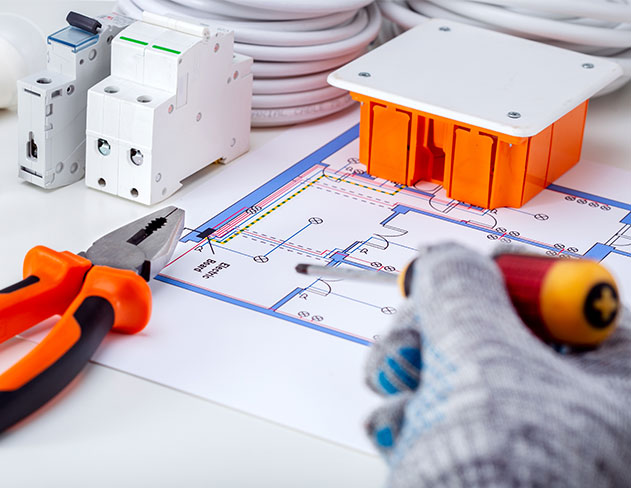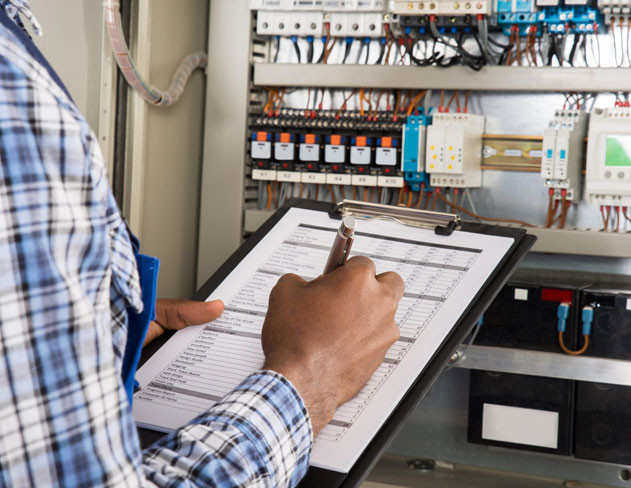What Is Emergency Lighting
What is emergency lighting – what is it for and what are your legal responsibilities? Emergency illumination systems are a vital safety feature providing light when normal power fails or lighting equipment malfunctions. Having reliable emergency lighting is crucial for any building, enabling safe evacuation and access for emergency responders.
This article gives facility managers, owners, and safety professionals an overview of emergency lighting systems – covering their purpose, legal obligations, components, installation, and maintenance best practices. Understanding key aspects will empower readers to make informed decisions improving building safety.
The significance of emergency lighting cannot be exaggerated. Power disruptions are unpredictable, and emergency systems act as a failsafe, transforming outages into visible exit routes. Without adequate emergency lighting, consequences could be disastrous.
Having functional emergency systems is legally mandated in public facilities in most jurisdictions. By learning fundamentals here, readers can maintain compliance, avoid penalties, and protect human life. Time spent understanding emergency lighting pays invaluable dividends.
The Basics
Emergency lighting refers to backup lighting that activates automatically when the main power supply fails. Unlike standard lighting, emergency lighting systems have a backup power source, usually batteries, allowing operation for a minimum specified duration. Emergency lighting serves two key purposes:
Firstly, it illuminates escape routes to enable the safe evacuation of occupants, known as escape route lighting. Secondly, it provides area illumination to facilitate emergency response procedures or shutdown of critical processes, called open area or standby lighting.
Emergency escape lighting is mandatory while open area lighting depends on the building type and risk assessment.
There are three main types of emergency lighting systems:
- Maintained lighting: Maintained emergency lights operate normally like standard lighting connected to mains power but will automatically switch to the emergency backup supply when required. They stay lit all the time.
- Non-maintained lighting: These activate only when the power supply fails or is disrupted. They remain off during normal conditions.
- Sustained lighting: Sustained lighting uses mains power under normal conditions but a low-voltage DC supply keeps control circuits active. This allows immediate activation of backup power if mains supply is lost.
The Importance of Emergency Lighting
Adequate backup lighting is indispensable for safety, regulatory compliance, and effective facility management. Let’s explore why:
Safety First: Backup lighting enables safe evacuation during blackouts or fire alarms. Well-lit routes and stairwells allow occupants to reach exits. Sufficient light levels also help emergency services access critical areas quickly. Insufficient illumination can lead to falls, panic, and chaos.
Legal Requirements: Most jurisdictions mandate backup lighting in public buildings through electrical and fire codes. For example, Canada’s Fire Code requires minimum one-hour backup lighting for buildings over 600 square metres. Insufficient backup lighting is noncompliant, and can lead to substantial fines or charges if injuries/deaths occur.
Building Maintenance: Functional backup systems are a key maintenance responsibility. Regular emergency lighting testing and inspection is essential for compliance and safety. Neglected maintenance compromises lighting reliability.
Components of an Emergency Lighting System
Key components of emergency lighting systems are light sources, battery backup, and a control unit:
Light Sources: LED and fluorescent lamps are common for efficiency and longevity. However, incandescent bulbs handle cold temperatures. Key factors are brightness, colour temperature, beam angle, and lumen output.
Battery Backup: Batteries provide power when mains fails. Lead-acid is most common but nickel-cadmium and lithium-ion work too. 1-4 hour backup times are typical. Periodic charging/replacement is required.
Control Unit: The control unit monitors mains supply and activates backup when needed. It charges batteries and enables automatic testing. Advanced units add remote monitoring/control capabilities.
Strategic Installation and Placement
Proper emergency lighting installation and placement are critical for effectiveness. Key guidelines include:
- Illuminate exits, stairs, aisles, ramps, escalators, and exit doors sufficiently to enable safe evacuation during a power outage.
- Light fire safety equipment, call points for activating alarms, first aid stations, and areas with hazardous materials adequately in case of emergencies.
- In control rooms, workspaces with risk of injury, and lobby/reception areas, provide sufficient open area or task area lighting based on risk assessments from qualified assessors.
- Mounting height affects coverage. The optimal height for escape route lighting is 2-2.5m to ensure safe path visibility. In large open spaces, suspend emergency luminaires at a minimum height of 3m for wider illumination.
- Space emergency light fittings based on lighting pattern and lumens output as per manufacturer recommendations and relevant codes of practice. This ensures adequate visibility and compliance.
- Strategically place emergency lighting units with illuminated exit signs at exits and any changes in direction along escape routes for clear visibility and direction.
Proactive Testing and Upkeep
While quality emergency lighting is reliable for years, routine testing and maintenance is essential:
- Monthly brief functional tests verify that systems activate properly during a power outage or mains power failure. This checks system reliability.
- Annual full discharge tests ensure batteries can provide emergency power for the entire duration of backup time rated. This verifies battery capacity.
- Replace batteries, lamps, and luminaires as per manufacturer’s schedule, typically every 4-6 years. This maintains optimal performance.
- Identify and fix common failure points like loose battery terminals, faulty recharging circuits, rusty lamp heads during regular testing of emergency lighting. This prevents bigger problems.
- Meticulous maintenance logs identify deterioration trends over time. These help optimise maintenance.
- Hire qualified technicians for periodic third-party testing and recertification as per standards. This provides external validation.
Regular testing catches issues early before major failures. Diligent maintenance ensures emergency lighting works dependably when required, including during dangerous processes requiring shutdown.
Innovations and Advancements
With technological improvements, emergency lighting systems are becoming smarter, more energy efficient, and more reliable:
- Smart emergency lighting systems have centralised control panels, automated testing capabilities, and remote monitoring via sensors and internet connectivity for simplified management and preventative maintenance.
- LED technology and solar-charged batteries are making systems more energy efficient and eco-friendly aligned with green building standards.
- New lithium-ion and sealed lead-acid batteries extend backup times and lifespan between replacements, reducing maintenance needs.
- Advanced diagnostics can predict faults before they happen and streamline preventative maintenance. This minimises downtime.
- Expanded integration with fire alarms, security, and building management systems enables holistic monitoring and control for optimal emergency preparedness.
Conclusion
In summary, emergency lighting is an essential safety provision that enables building evacuation and emergency response during power failures. In extreme cases, lack of emergency lighting can lead to regulatory non-compliance, fines, litigation, injuries, and even loss of life.
Facility managers and building owners must prioritise emergency lighting, from installation to ongoing maintenance. Compared to the devastating consequences of neglected emergency lighting, the investment in a robust system is minuscule.
This article has explored emergency lighting fundamentals – its purpose, legal obligations, system components, placement strategies, testing procedures, and technological advancements. Armed with this knowledge, readers can take action to evaluate their current emergency lighting systems or make informed decisions on new installations.
FAQ Section
Q1: How often should emergency lighting systems be tested?
Emergency lighting systems should undergo monthly short functional tests. Full duration discharge tests are recommended at least annually. Third party specialist testing every 3-5 years ensures external validation. Testing frequency may also depend on factors like system age, environmental conditions, and manufacturer recommendations.
Q2: What is the difference between maintained and non-maintained emergency lighting?
Maintained lighting operates continuously like standard lighting on mains power. When power fails, it switches automatically to the emergency backup supply. Non-maintained lighting remains off during normal conditions and activates only during a power failure or when the emergency system engages.
Q3: How long should the battery backup last in an emergency lighting system?
Most electrical codes require a minimum backup duration of 90 minutes for emergency lighting systems. However longer periods like 2 or 4 hours may be recommended for large or complex facilities and those with higher evacuation times. Backup power duration should be determined based on an emergency needs assessment of the specific building.

